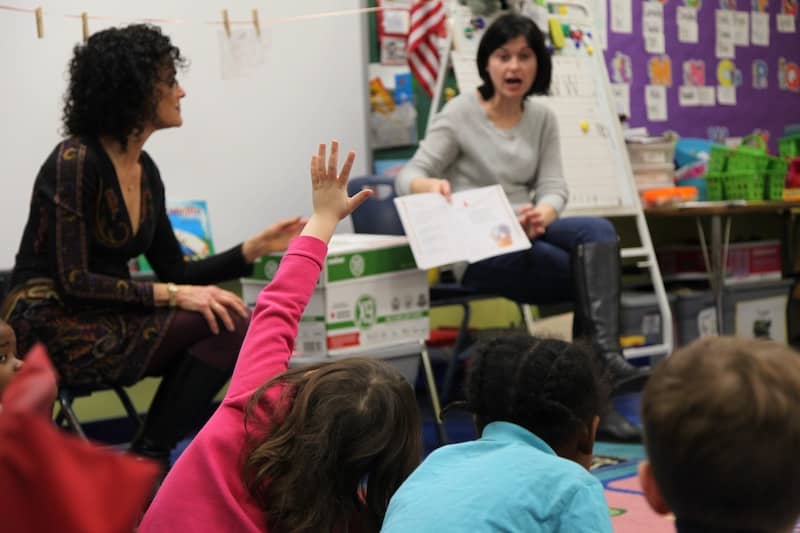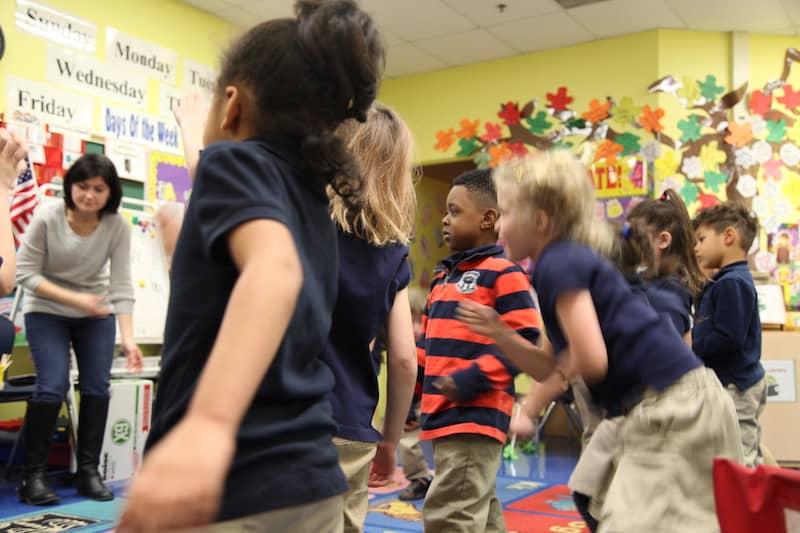Blog

Maryland Wolf Trap Residency with Katherine Lyons
Unique and innovative arts-based strategies are captivating young audiences in Maryland classrooms. At Margaret Brent Elementary/Middle School in Baltimore City, the very youngest students are excited to connect to literature with actress and master teaching artist Katherine Lyons through movement and theater as part of a Maryland Wolf Trap residency.
Katherine creates what she describes as “hands-on, multi-sensory story experiences” by having children actively participate in the telling of the story. Physical motions are assigned to important objects and costumes help illustrate characters. To prepare for Katherine’s arrival on this day, Pre-K teacher Mrs. Lee asked her students to draw what they think will happen in the story. They hung one prediction on a clothesline.

Now, at the front of the room, between Katherine and Mrs. Lee sits a ‘story box’ filled with clues describing the characters in the story. One by one, a student pulls from the box a tool or an article of clothing, then the class takes turns guessing who the clues belong to.
As each character is identified, one student hangs a picture representing the character on the clothesline and another student becomes the character. The students use each of their senses to connect to the story, made ever more lively through the introduction of gestures, chants, and props. “Costumes help bring the story to life,” Mrs. Lee said. “The class is more interested and invested in story time when they get to use props and act it out.”

Once story time is completed, Katherine and Mrs. Lee begin planning lessons that they will co-teach. Every Wolf Trap program includes embedded professional development to build teachers’ skills and confidence in arts integration techniques. Teaching artists work with classroom teachers to learn effective ways to engage students in participatory activities that involve all the senses and encourage critical thinking, creativity, communication, and collaboration. This ensures that the arts remain a strong part of the classroom teachers’ lessons long after the residency ends.

Mrs. Lee plans to continue to use these new strategies during an instruction block that includes literacy, social studies and science, but she’s excited to try them out in other areas of the curriculum as well. “I may use the story box with some counting stories and to help illustrate word problems in math!”

Eighty-five percent of brain development occurs during the first five years of a child’s life. Participation in the arts encourages positive growth in a child’s emotional, physical, intellectual, creative, and social development. As the Maryland affiliate of the Wolf Trap Institute for Early Learning Through the Arts, Young Audiences expands access to the arts for Maryland’s youngest students during the critical early learning years. Bring a Maryland Wolf Trap 16-Session Residency into your school.








